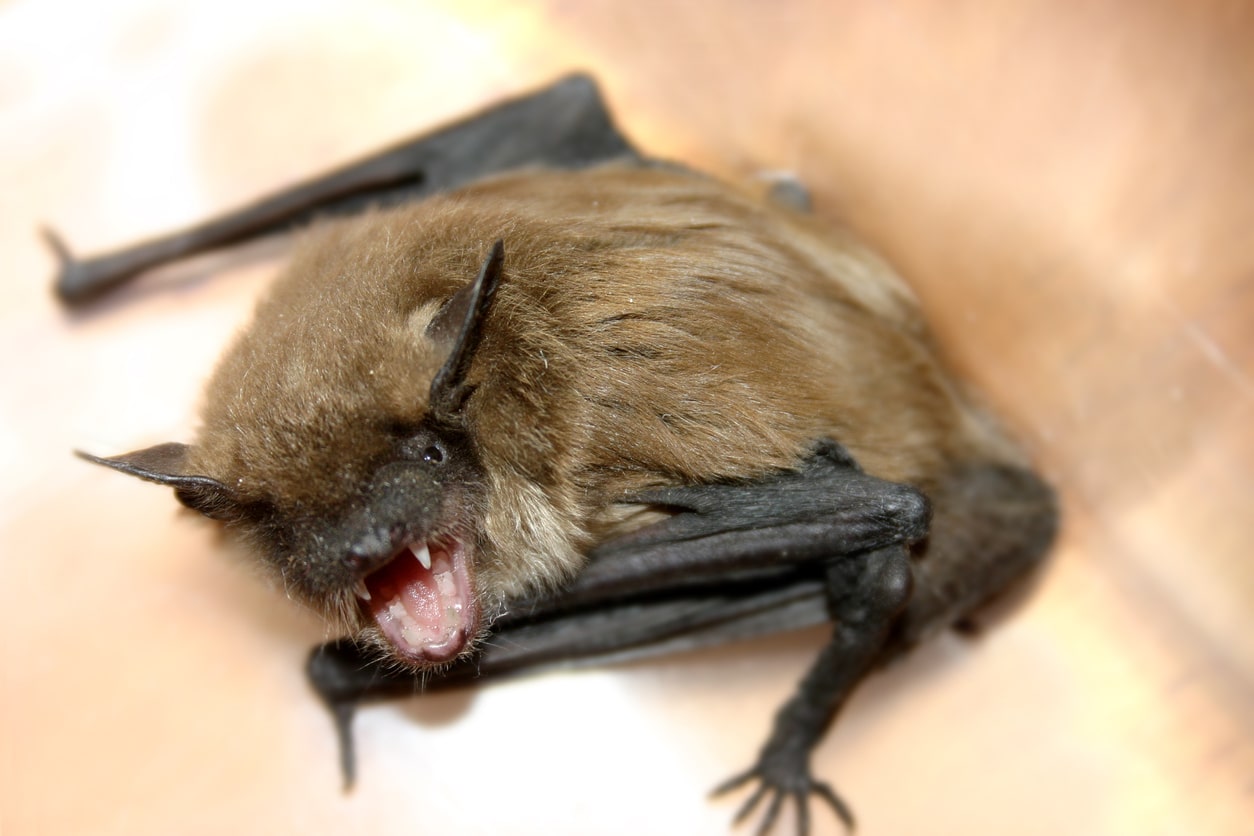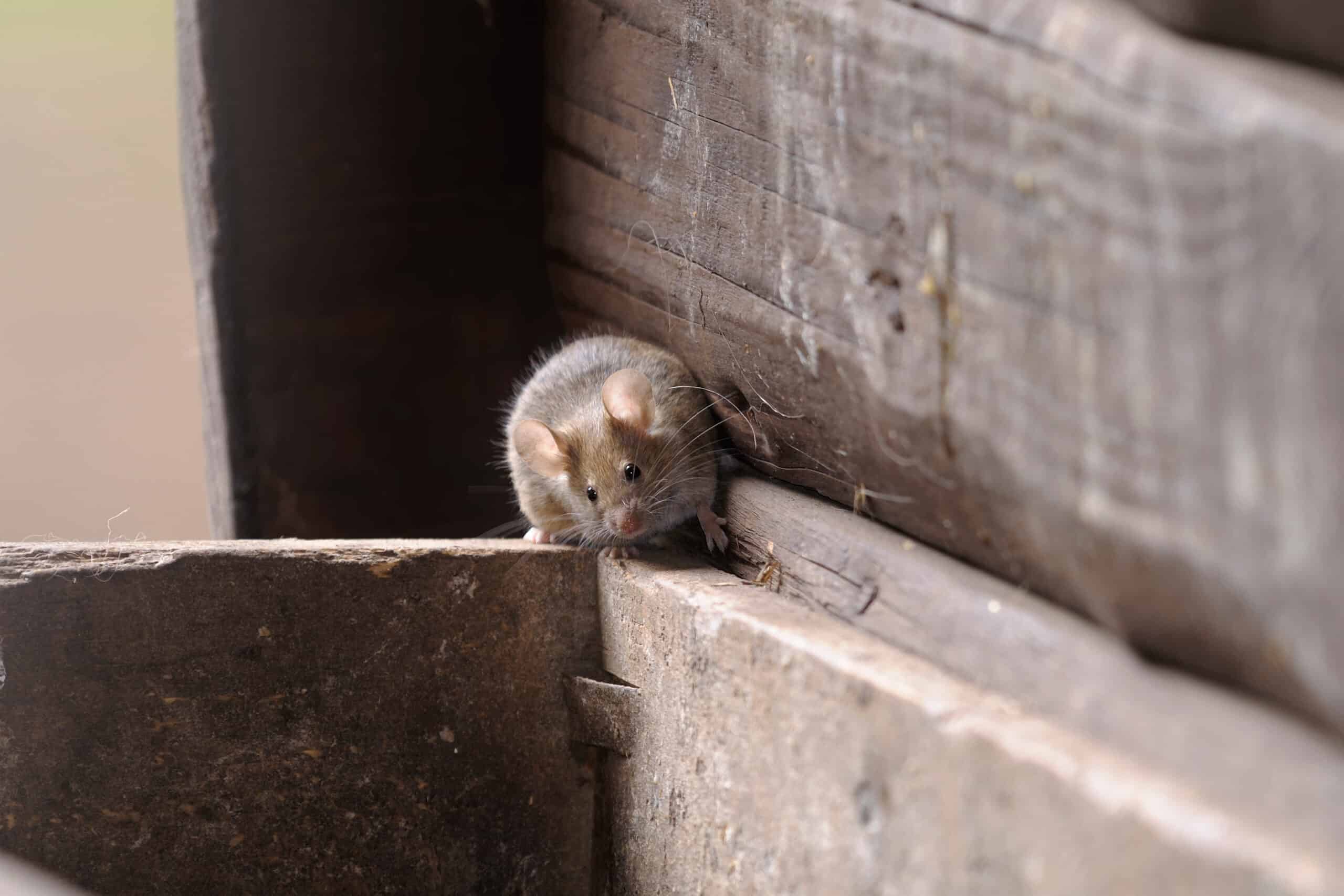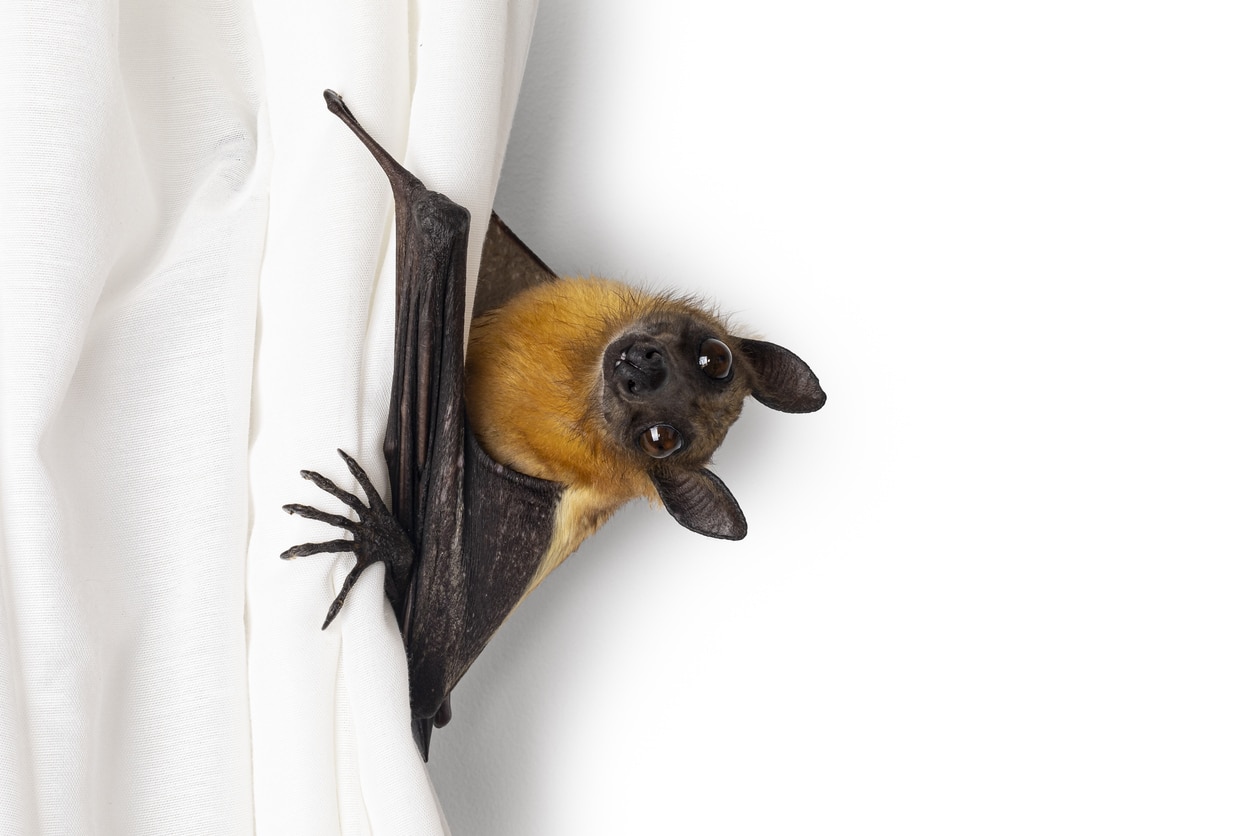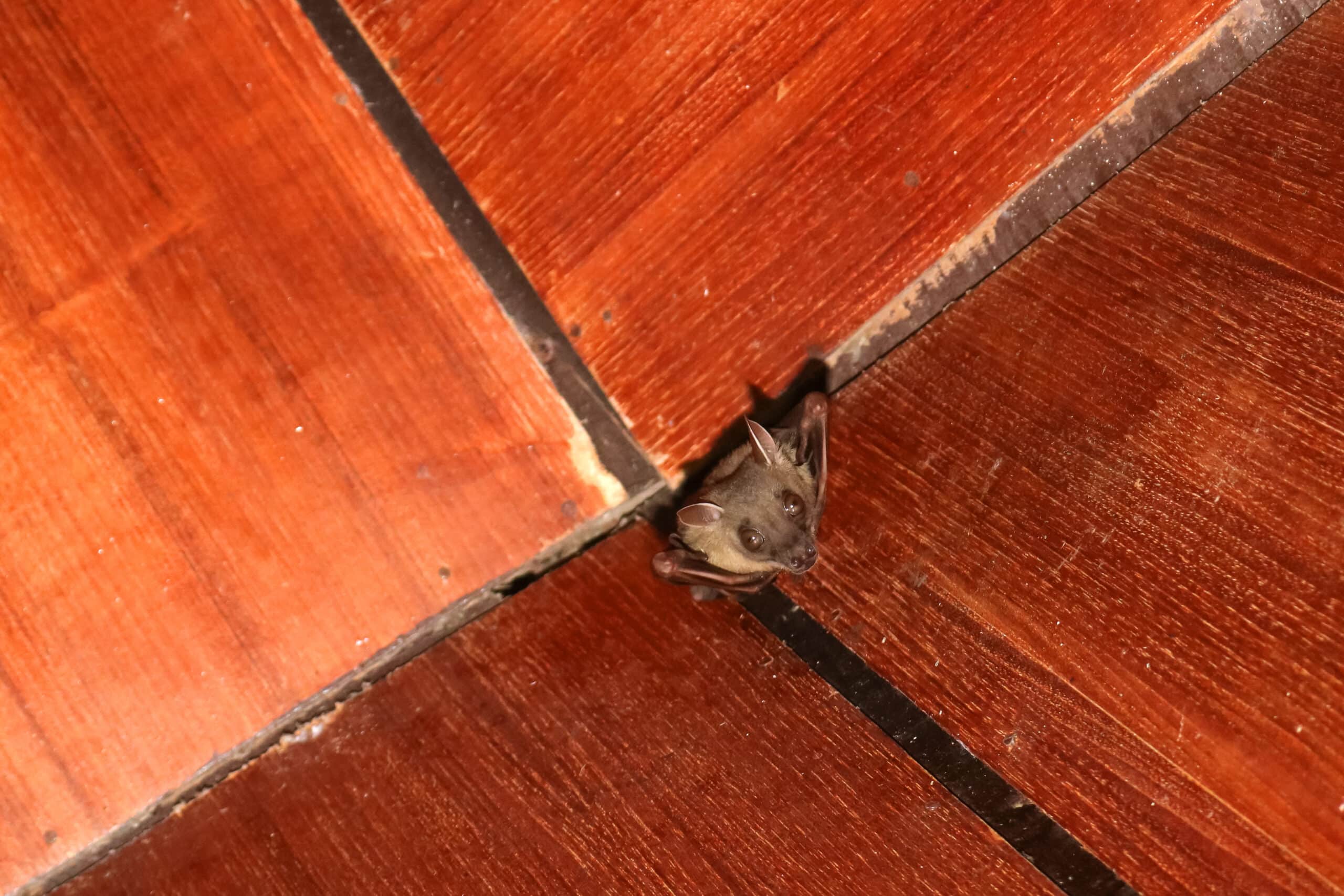You thought you got rid of them. The traps were set, the last one was…

Protect Your Loved Ones Against Rabies From Bats
Bats are one of the primary wildlife species associated with the spread of rabies, a serious and potentially fatal disease. Although only a small percentage of bats carry the virus, any encounter with them inside your home increases the risk of exposure for both humans and pets like dogs and cats.
Rabies can be transmitted through bites or scratches, making it crucial to handle bat encounters carefully. Professional bat removal services ensure that bats are safely removed from your home without violating wildlife protection laws. Let’s explore how rabies is transmitted and why taking proper bat control measures is critical for your safety.
How Common Rabies Transmission from Bats to Humans Is in the United States
Rabies transmission from bats to humans is rare, but it still poses a significant threat, especially if bats come into contact with humans or pets. In the United States, bats are one of the most common wildlife carriers of rabies, though only a small percentage of the population is infected.
According to the Centers for Disease Control and Prevention (CDC), approximately 5% to 6% of bats tested in the U.S. are found to carry rabies. While the risk is low, it’s important to handle bat encounters carefully and avoid direct contact.
Bats Like the Dark
Bats often find their way into attics, chimneys, and other secluded areas where they can form a bat colony. If a bat problem is left unaddressed, the risk of rabies exposure increases, especially if bats live in close proximity to your living space.
Bat exclusion methods, such as sealing entry points and installing one-way devices, can help prevent bats from entering your home while allowing them to leave.
Rabies Affect in Humans & Family Pets
Rabies is a viral disease that affects the central nervous system, and once symptoms appear, it is almost always fatal. In humans, rabies initially manifests as flu-like symptoms but can quickly escalate to neurological issues like confusion, agitation, and paralysis. If untreated, rabies leads to death. The World Health Organization states that early intervention, such as receiving post-exposure prophylaxis (PEP), is critical after a potential rabies exposure.
Family pets, especially dogs and cats, are also at risk if they come into contact with a rabid bat. Pets that have not been vaccinated against rabies can contract the disease and potentially spread it to humans. To protect your pets, ensure they are up to date on their rabies vaccinations and avoid direct exposure to bats or other wild animals.
If you suspect that a bat has bitten or scratched your pet, contact animal control immediately and seek veterinary care. Professional bat removal is necessary to minimize future risks.
Dangers of Guano From Bats
Bat droppings, known as guano, pose significant health risks when they accumulate inside homes or other enclosed spaces. One of the primary dangers of guano is that it can harbor a fungus called Histoplasma capsulatum, which causes histoplasmosis—a severe respiratory infection, especially in individuals with weakened immune systems. When guano dries, the fungal spores can become airborne and easily inhaled, leading to symptoms like coughing, fever, and fatigue.
According to the CDC, histoplasmosis is particularly common in areas where bat and bird droppings accumulate. Inhaling the spores from disturbed guano can result in serious lung infections, and in some cases, the infection can spread beyond the lungs. If you have bats roosting in your attic or another part of your home, the accumulation of guano could become a health hazard for you and your family.
In addition to health risks, guano can cause significant structural damage. The acidic nature of bat droppings can corrode building materials, leading to costly repairs over time.
Legal Protections for Bats: Why Bats Need Humane Pest Control
Bats are protected under various state and federal laws, including the Endangered Species Act and state-level conservation laws. In Michigan, for example, it is illegal to harm or kill bats during certain times of the year, especially during their maternity season when young bats are unable to fly. This is why humane bat removal is necessary to comply with legal requirements while addressing a wildlife problem.
Humane bat removal involves methods that prioritize the safety of both the bats and your home. For instance, installing check valves for bats allows them to exit your property without re-entering, a method that fits within wildlife control regulations. You can also install a bat house near your property to give bats an alternative roost, reducing the chance of them entering your home.
Using humane methods like bat exclusion not only protects your home but also preserves bat populations, which are vital for controlling insects. Working with professional bat removal service providers ensures that you comply with legal protections while keeping your family safe from rabies and other risks associated with a bat problem.
How to Prevent Bat Infestations
Preventing a bat infestation is the best way to protect your home and family from the dangers associated with bats, including rabies and structural damage. Here are some proven methods to help prevent Michigan’s bats from entering your home:
- Seal Entry Points: Bats can enter your home through small gaps and cracks in your roof, vents, or walls. Sealing these entry points is crucial in keeping bats out. Make sure to inspect your home regularly, especially in attics where bats live.
- Install One-Way Exclusion Devices: If bats have already entered your home, using one-way exclusion devices ensures that bats can leave but cannot return. This is a critical part of humane bat removal and is often required by law in certain states during the maternity season.
- Maintain Your Home’s Exterior: Keep your home in good repair by fixing broken siding, gaps in chimneys, and loose shingles. This helps block entry points that could attract bats or other pests.
- Install a Bat House: Offering bats an alternative roosting spot, such as a bat house, can reduce the chances of them nesting in your home. This is an eco-friendly way to keep bats near your property for pest control purposes without inviting a bat infestation.
- Work with Professional Pest Control Services: Professional bat removal services can assess your home and recommend preventive measures specific to your situation. They can also handle any existing wildlife problem using safe and effective methods and recommend wildlife rehabilitators if any injured bats are in your property.
Trust Creature Control for Humane Bat Control in Michigan
Creature Control is an industry leader when it comes to managing wildlife in a way that protects both animals and ecosystems. By focusing on humane practices, Creature Control resolves pest issues effectively and contributes to the preservation of local biodiversity, allowing bats to fly away with your property staying safe.
If you suspect a bat colony has settled in your attic or home, don’t wait—contact us for professional bat removal and rodent control services to restore your home. For more information on humane bat removal and other wildlife control options, call us at 1-800-441-1519.
Contact Us Today!
"*" indicates required fields
Call Us
For Immediate Help
Call 1-800-441-1519 to talk to one of our local wildlife experts. Or, fax us at (734) 551-9795.
Business Hours
Monday – Friday: 8 a.m. to 6 p.m
Saturday: 8 a.m. to 2 p.m.
Sunday: 8 a.m. to 12 p.m.
For After-Hours Help
Call (877) 623-9190. For after-hours emergencies, please be aware that additional charges will apply. We can also be reached by fax at (734) 551-9795.


